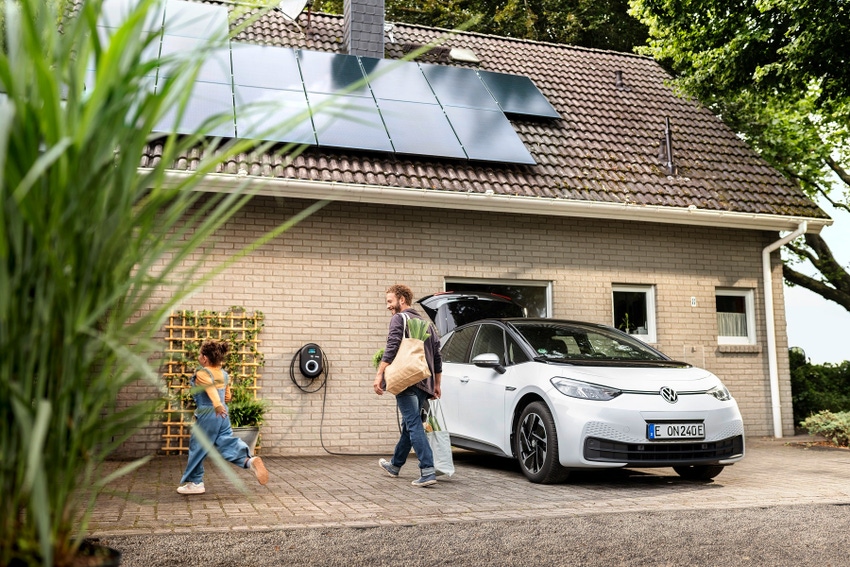
Connects decision-makers and solutions creators to what's next in quantum computing
IBM Panel Highlights Quantum Role in Sustainability
E.ON taps quantum for energy portfolios, decentralized grids

Quantum computing holds the promise of addressing energy sustainability challenges at numerous levels, from managing a future decentralized energy grid and developing wholesale energy portfolios to personalized billing encouraging renewable energy use.
This was the theme of a panel at a recent AI and quantum computing event at IBM’s research facility in Zurich, Switzerland, featuring E.ON Digital Technology quantum computing lead Corey O’Meara.
Energy multinational E.ON started a Skunkworks-style program in 2019 to address the challenges of an evolving energy supply model using quantum computing. O’Meara said the evolution of energy technology meant providers were turning to quantum computing to address the questions the move raises.
“As we become more decentralized, more digital, where are the problems that are fundamentally challenging to our systems today? Are these the sort of problems that quantum computers can solve that sort of help us leverage that technology?” he said.
E.ON formed a partnership with IBM Quantum to look at mitigating risk in its energy portfolio for big companies. The price set for long-term wholesale energy contracts is based on Monte Carlo simulations (algorithms that use repeated random sampling), in this case of a variety of complex interrelated factors, including outdoor temperature and gas prices, and needs to be competitive but profitable.
“The E.ON energy traders run simulations in the cloud, and it currently takes 24 hours to get a result and make an informed decision on how to price an upcoming contract,” said O’Meara. “This new quantum algorithm allows us to do it in four or five hours. It’s a great use case to demonstrate quantum advantage.”
E.ON is also looking at a more holistic approach by using quantum computing to help develop a future centralized grid with partner LMU University of Munich. Named Quantum Grid, or QGrid, the three-year, seven-figure project was recently awarded a German Federal Ministry grant.
“The idea behind this project is that we look at how a future decentralized grid might look and what specific optimization problems can you leverage quantum technologies with,” said O'Meara.
“You plug in your electric car to charge the battery, and you might have a solar panel that powers your house and car. But can you sell that excess energy to your neighbors down the road? Why do you have to get energy from thousands of kilometers away that was made in the power plant burning gas?”
In this scenario, the more assets get plugged into the grid, the more complexity is introduced, and this is where quantum algorithms step in.
“How do you manage the transferring of energy? How do you know if the power lines can handle the load right? How do you know what power lines to upgrade or what new ones to install to handle more power going through them?” asked O’Meara.
O’Meara described the specific use case of electricity bills that are dependent on time or day, quite often offering cheaper rates for using power at nighttime. But much renewable energy comes from solar power which is only generated during daylight hours.
“We have products now that measure the amount of green renewable energy being fed into parts of European cities, so if you live in a certain neighborhood, we can tell the percentage of renewable energy being fed into the grid in real time,” he explained.
“Why don't we flip it around and say let’s make your energy cheaper to use when there’s a higher percentage of renewable energy, which could be at any time of day. You can imagine how this could scale to 50 million customers across Europe.
“How on earth do you define an optimization problem where each person has their own energy price? You can look in your phone app, and get a notification saying, hey, now's green energy time, it's cheaper. You can do your more energy-intensive things like charging your car, for example. We have some preliminary early results on the project and it's pretty promising.”
While more fault-tolerant quantum computers are under development, the current era of noisy, intermediate-scale quantum (NISQ) computers is a risky investment, even for a company as large as E.ON. O'Meara explained that the company’s leadership realized that the data-intensive challenges of energy transition are pushing the limits of current AI and machine learning models and decided to investigate this new technology to complement existing tools.
“It's a game changer even for small-scale problems, such as vehicle to grid, which is bi-directionally charging electric vehicles,” said O'Meara. “You buy energy in from the grid, you discharge energy to the grid. We have this running and, even at a small scale, the runtime in the cloud is getting pretty tight, and we're nowhere near the adoption level that we will see in the future. That was the kick for the quantum program.”
However, detractors argue that most quantum computers, such as IBM’s superconducting technology, require fridges running around the time to produce operating temperatures close to absolute zero, which must be energy intensive. But they use much less energy to deliver comparable results to classical computers, and O’Meara said the energy used won’t increase as computational power grow.
“The amount of computational power is going to be exponentially increasing over the next years for the same energy that you used to cool it down in the first place,” he said.
About the Author(s)
You May Also Like
.png?width=100&auto=webp&quality=80&disable=upscale)
.png?width=400&auto=webp&quality=80&disable=upscale)




